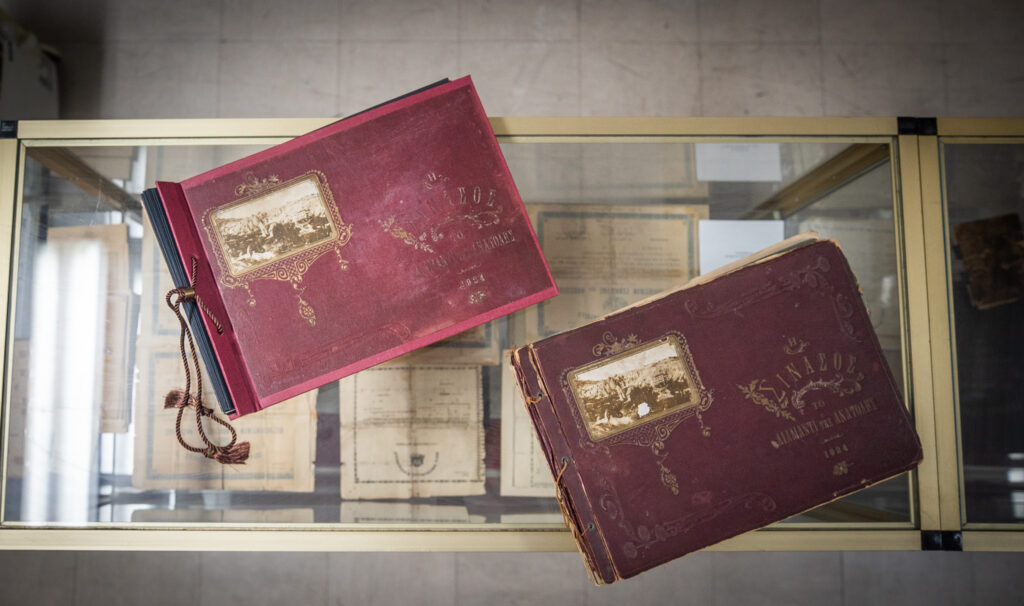
The photo album Sinasos of Cappadocia was published in Athens at the end of 1924. This album is a conscious attempt to preserve the past, i.e. the history, the traditions, and the collective memory of a community which does not exist anymore. The photographs coming from ‘there’ and the short texts written by the refugees in their new ‘here’ constitute an endeavour to reconstruct their old communal life, from its history and architecture to the local dialect and the songs they used to sing.
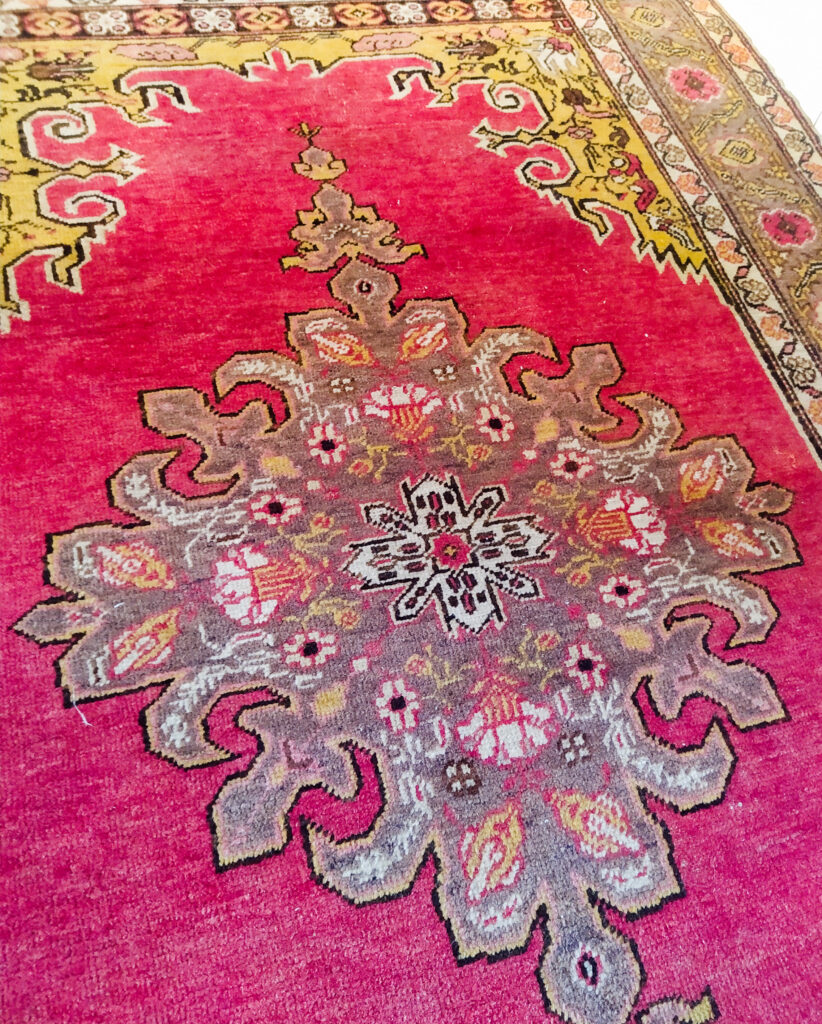
Grandma Despoina’s handmade carpet was one of the few objects she had brought with her from Sinasos and is still in use today, in the living room of her great-granddaughter, Anastasia Sarantari. Its vibrant colours and bold shapes remain impressive even after all these years.
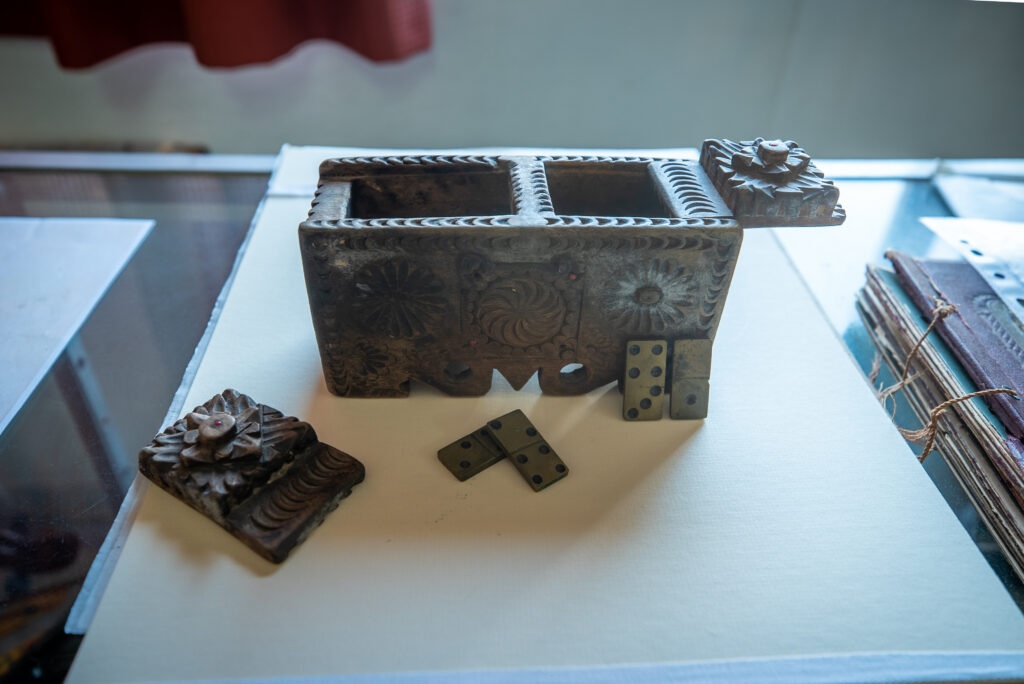
The two wooden domino sets displayed in the small museum of the ‘Nea Sinasos’ Association were brought to Greece by exchangeable refugees. Choosing to carry a game on a journey of displacement, alongside other, more practical and valuable items, might appear incomprehensible to us, especially since we don’t know who the original owners were or, most importantly, why they made this choice.
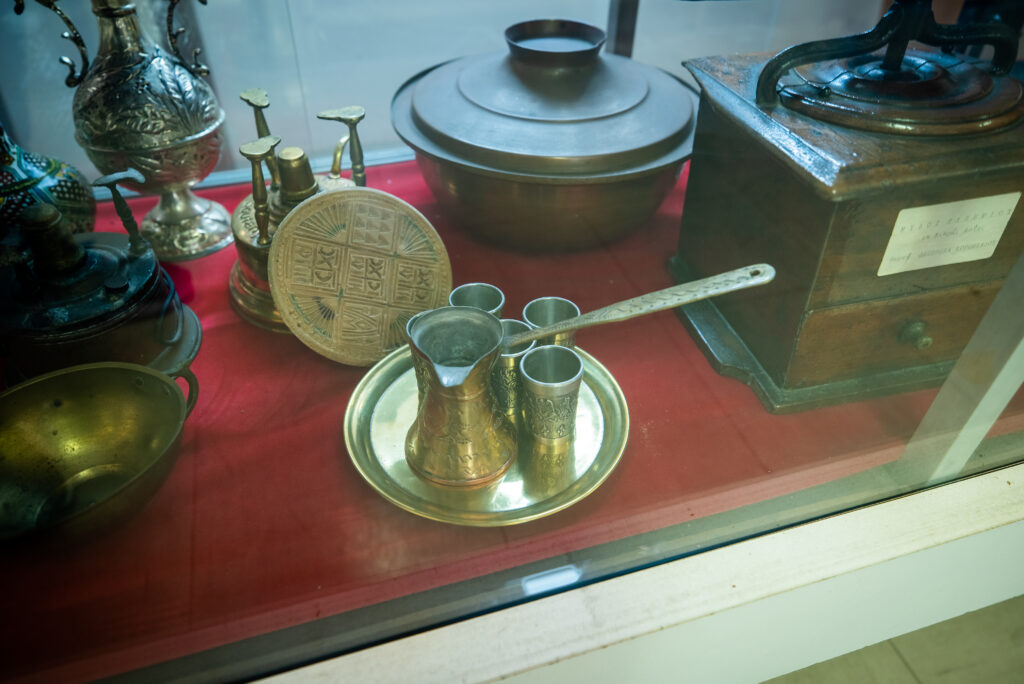
The refugees from Sinasos, just like all refugees who left their homes in a more organised fashion due to the population exchange agreement, filled their bundles and chests with items of high material or emotional value as well as objects they thought would prove useful. Household items could fall under any of these categories. Coffee cups, coffee pots, grinders, plates, glasses, cutlery, bronze bowls and platters were the most common everyday objects that still survive in the houses of refugee descendants.
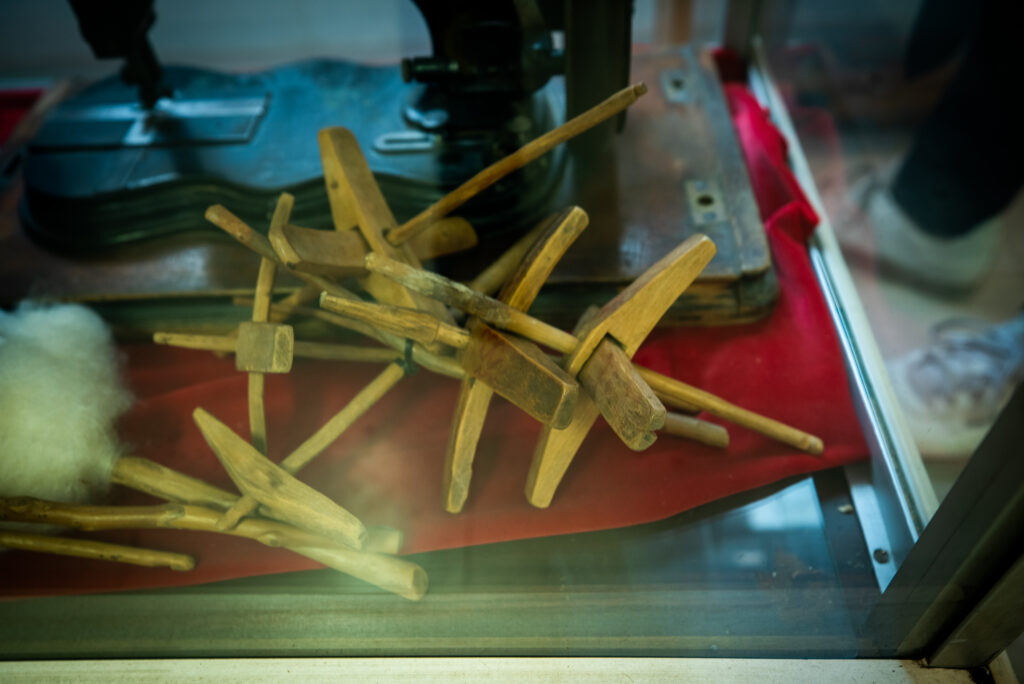
Spinning wool yarn is a major part of the preparatory process for weaving. Producing thin yarn was a painstaking, time-consuming task that required plenty of patience. Three tools were mostly used during spinning: a distaff, a spindle, and a whorl. The yarn was then wound into a skein using a spool.
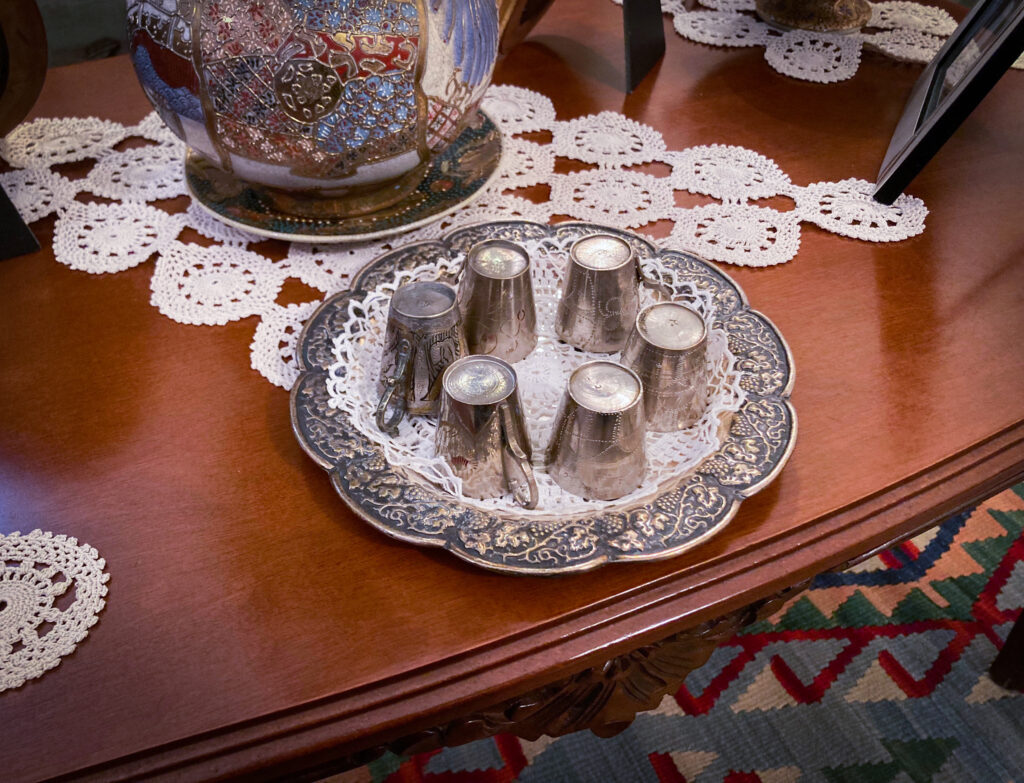
On October 2, 1924, according to the terms of the Lausanne Treaty, Angeliki, her three children and her mother-in-law, Nymfodora Chatzitheodoridou, left their home carrying seven bundles with them in which they tried to fit their most useful and valuable possessions. The family made it to Mersin where they boarded the ship Destounis and travelled to Greece. Half the ship’s passengers disembarked in Evoia and the other half in Piraeus.
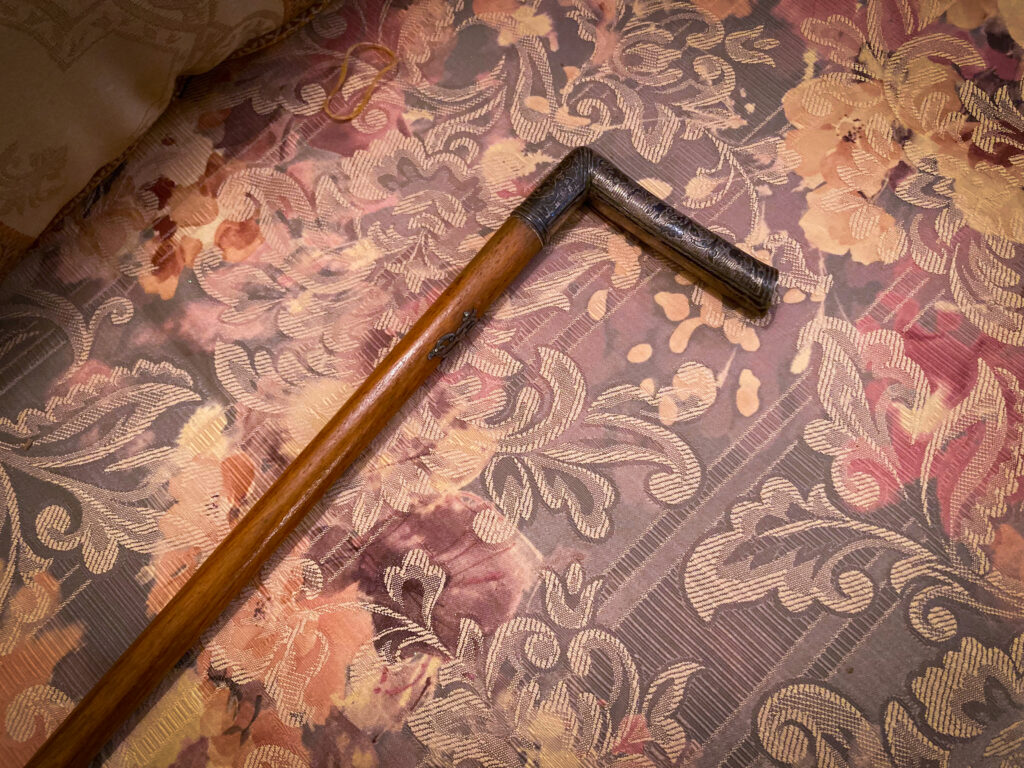
Sotiris Marsellos, a retired theologian, keeps his grandfather’s walking stick in the living room of his refugee house. Theologos Chatzitheodoridis, Sotiris’ grandfather, was a textile merchant in Constantinople, but was originally from Sinasos.
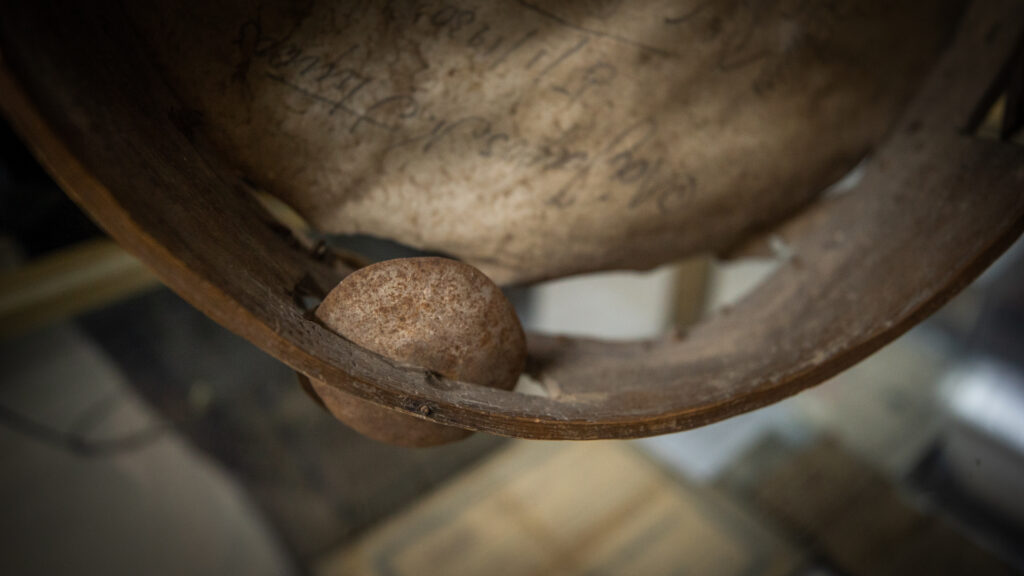
Vaso Pempe, Lazaros’ niece, remembers how, during moments of joy, the sound of the tambourine that Lazaros had brought over from Sinasos would carry through his house. ‘Uncle Lazaros loved a good party and his house was always open’, she says. When Lazaros’ second wife gave the tambourine to Vaso as a gift, she remembered all these feasts and parties that had brought the family together.
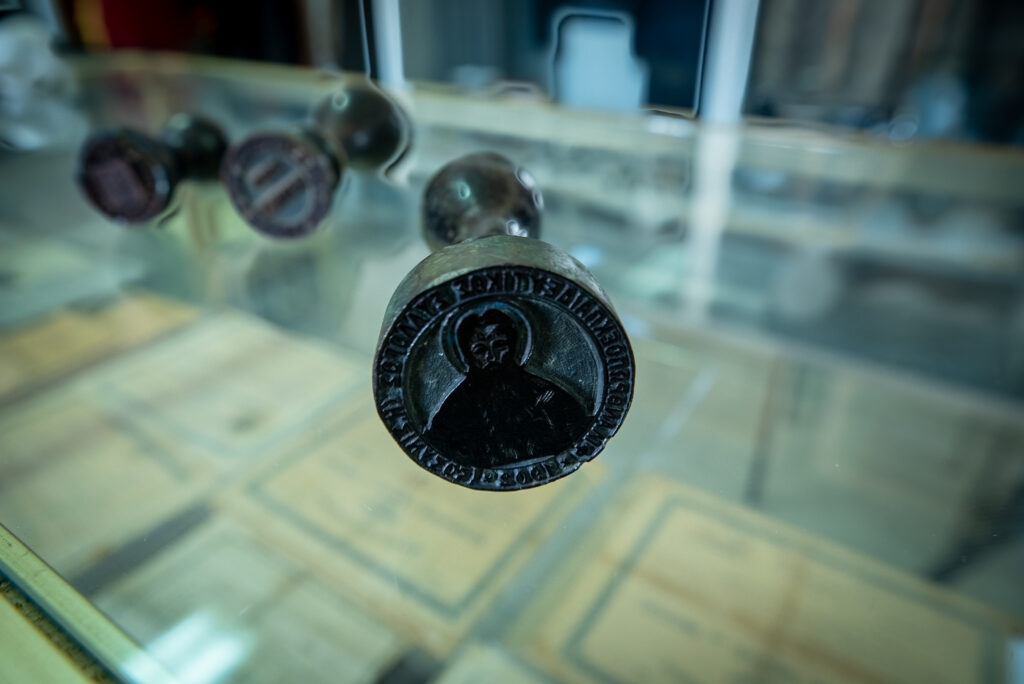
Even though none of the institutions of Sinasos would survive the resettlement in Greece and the new circumstances after the Exodus, its residents painstakingly packed and moved an array of community objects and registers, alongside their own personal belongings. Despite the fact that the three seals they brought to Greece were never used, they still attest to the meticulousness of the organising system the residents of Sinasos had to leave behind and its importance to them.
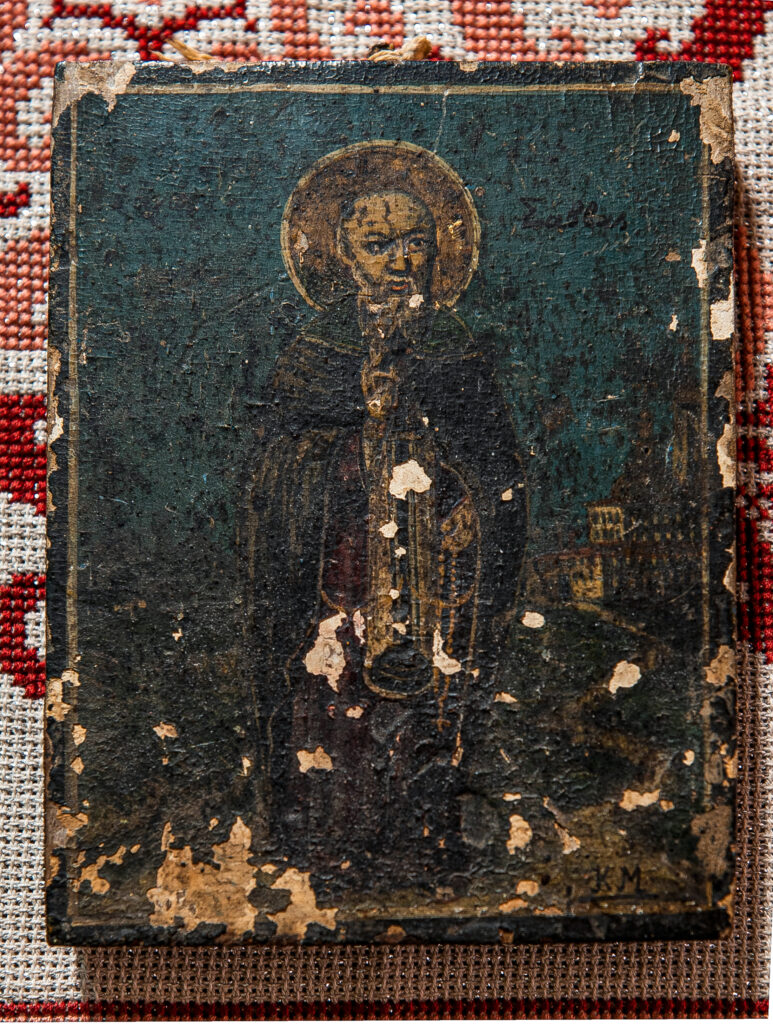
Savvas Leptourgidis, a retired journalist, was born in 1948 in the American Women’s Hospital in Kokkinia and grew up in Keratsini, in the refugee neighbourhood of Amfiali, where he still lives. This icon of Agios Savvas is not only a part of his own and his family’s past, but also a piece of his homeland’s culture.









